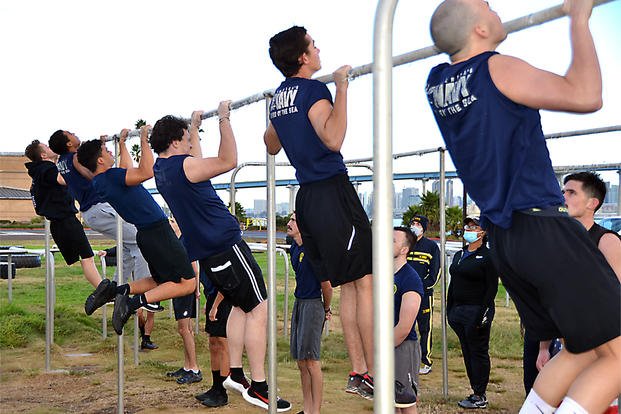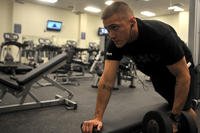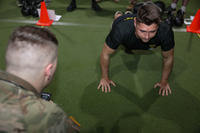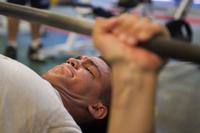There are no tips or tricks to getting better PT scores or through challenging selection programs. There is no secret sauce. Your increases in performance require work, but I have strategies and methods to help.
Stew, Do you have any tips to scoring better on the Navy PST. It seems that I can do OK on the events individually, but putting them all together (500-yard swim, push-ups, sit-ups, pull-ups, 1.5-mile run) is killing my PT and run scores. Thanks for the time. Jack
Getting in shape for the physical screening test, or PST, requires you do start having workouts that look like the PST.
Swim first: Do your swim first as it will tire you out for upper-body PT and the run. Your glycogen and electrolytes (energy stores) will be lower and need to be replenished during the workout and test. Sip some form of sugar/electrolyte drink that you like (Gatorade, etc.), especially if you are sweating profusely during the test. See more info here -- Combat Swimmer Stroke (video)
Push-ups: It is recommended to do push-ups, bench presses, dips and military presses in an upper-body workout every other day, with regular changes to focus on strength and muscle stamina with your body weight. More push-ups means you are taking a strength exercise, getting your first few reps and turning it into a muscle endurance exercise. Play around with bigger sets to push your endurance in this exercise, but use the days between push days to rest that muscle group. Do leg days or cardio days between days of max push-up (pushing) workouts. See Push-up Push for a two-week challenge. But see proper push-ups for form tips.
Sit-ups: Like running, sit-ups require you to learn a goal pace. For instance, if you want 100 sit-ups in two minutes, you need a pace of 25 sit-ups in 30 seconds. Most people lose their pace when they do 30-35+ in the first 30 seconds. Then they discover that they cannot match that pace in the next 1:30 and maybe only achieve 65-70 sit-ups. Learn the pace, and in a few days, you will score in the 80-90s if that was your problem. See Proper Sit-up Pace Drills.
Pull-ups: These are the toughest for most people. Heavier people tend to have more issues, but you have to practice pull-ups or start by getting used to your body weight hanging from the bar. See Progression for Pull-ups. Also try the Pull-up Push.
Learn how to Transition from the PT to the run. Take the 10 minutes between the PT and the run and get the blood back down to your legs after max-rep sets of push-ups, sit-ups and pull-ups. That is key to running efficiently in the next event.
1.5-mile run: Learn your goal pace and stick to it. Practice it with 400- to 800-meter intervals. Running last is a tough combination that you have to get used to. Even when doing 4-5+ miles, make sure the last 1.5 miles of the run are at close to testing/goal pace speed. Push yourself on the last 1.5-mile run. See 1.5 mile Running Link.
Putting it all together, I created the PST Clinic to teach a strategy to preparing and testing yourself so you reach optimal scores. See how to take a PST and build a strategy around your strengths and weaknesses. To do this requires you to test yourself regularly with PST workouts. Doing the Double PST is always a good way to make a single PST easier.
More articles to reference:
Stew Smith is a former Navy SEAL and fitness author certified as a Strength and Conditioning Specialist (CSCS) with the National Strength and Conditioning Association. Visit his Fitness eBook store if you’re looking to start a workout program to create a healthy lifestyle. Send your fitness questions to stew@stewsmith.com.
Want to Learn More About Military Life?
Whether you're thinking of joining the military, looking for fitness and basic training tips, or keeping up with military life and benefits, Military.com has you covered. Subscribe to Military.com to have military news, updates and resources delivered directly to your inbox.


















